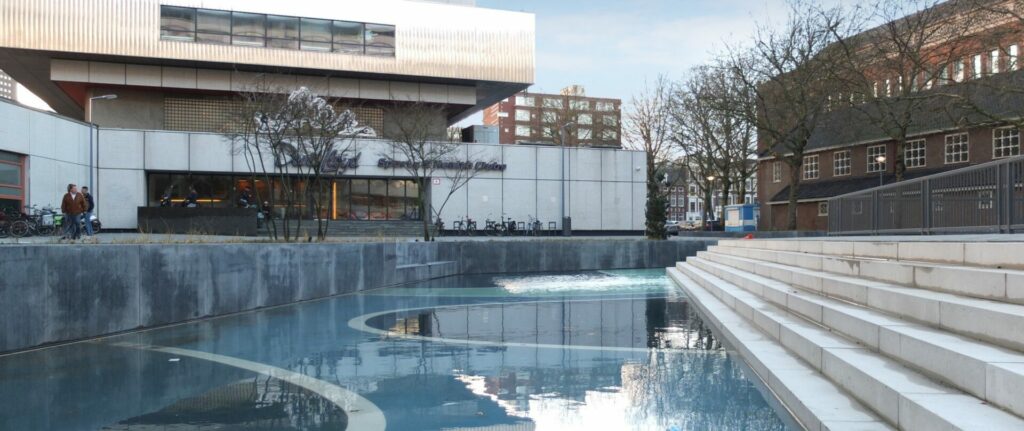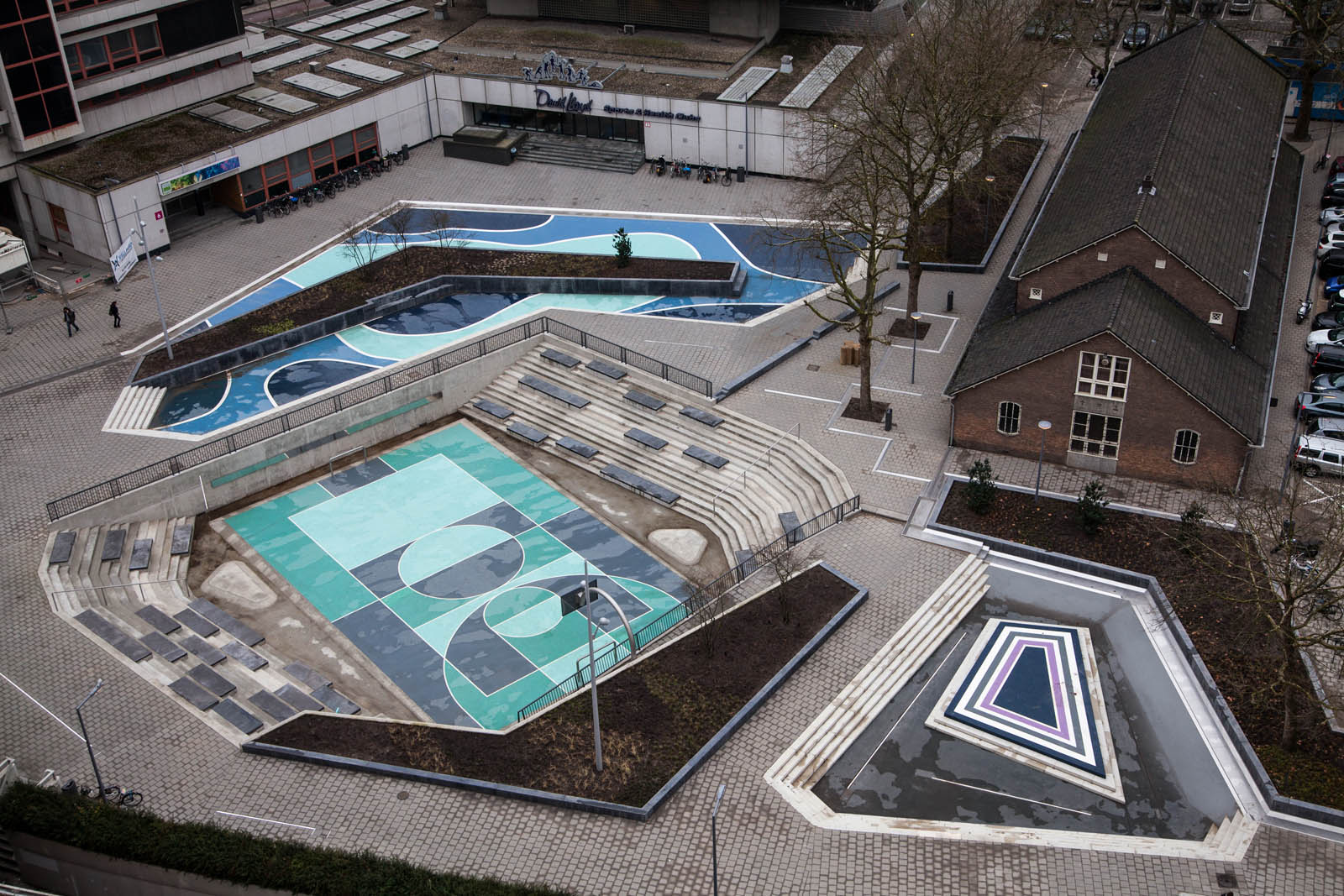Watersquares help us adapt our citys to climate change impacts. Climate change causes stronger and more frequent heavy rain. These rainfalls can cause severe floodings in sealed urban areas. Therefore, retaining stormwater in cities becomes increasingly necessary. However, space is scarce and there are already conflicts of use in public city squares.
An innovative method to link water retention, recreation and urban biodiversity are Watersquares. Watersquares are an invention by Dutch architects De Urbanisten, where public squares are remodelled to fit multiple functions. For this purpose, sunken areas are built. During dry weather, these sinks are used as a basketball or skate court. However, when it rains, bioswales channel the excess water into these sinks. There it is retained until the sewer system has the capacity to drain it again.

In Rotterdam (NL) the Benthemplein was redesigned with the principles of Watersquares. The square features 3 retention basins with different dry weather usages. The two shallower recesses can be used for sitting and relaxing but also as a skate park. The deep central recess serves as a basketball court and also offers seating. When it rains, the two shallower recesses are flooded first until they overflow into the larger. The sinks were designed in such a way that only the shallower zones are filled with water during smaller rainfalls and the complete retention volume is only utilized during heavier rainfalls.
Here you find a great video explaining the functionality of Benthemplein Water Square:
If you are interested in more climate adaptation strategies for cities, check out my post on sponge cities


Comments are closed